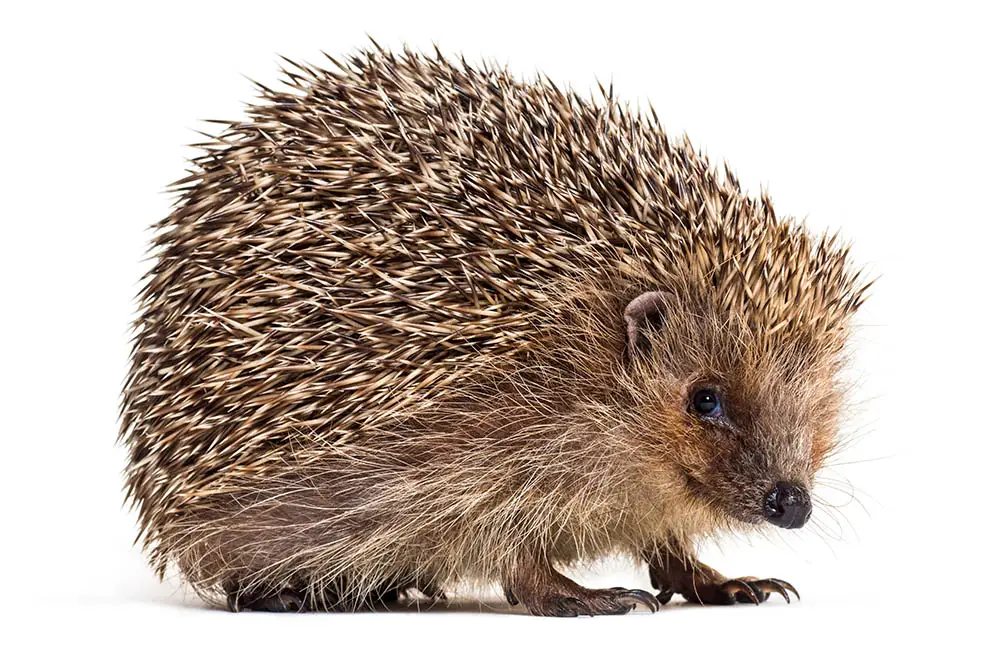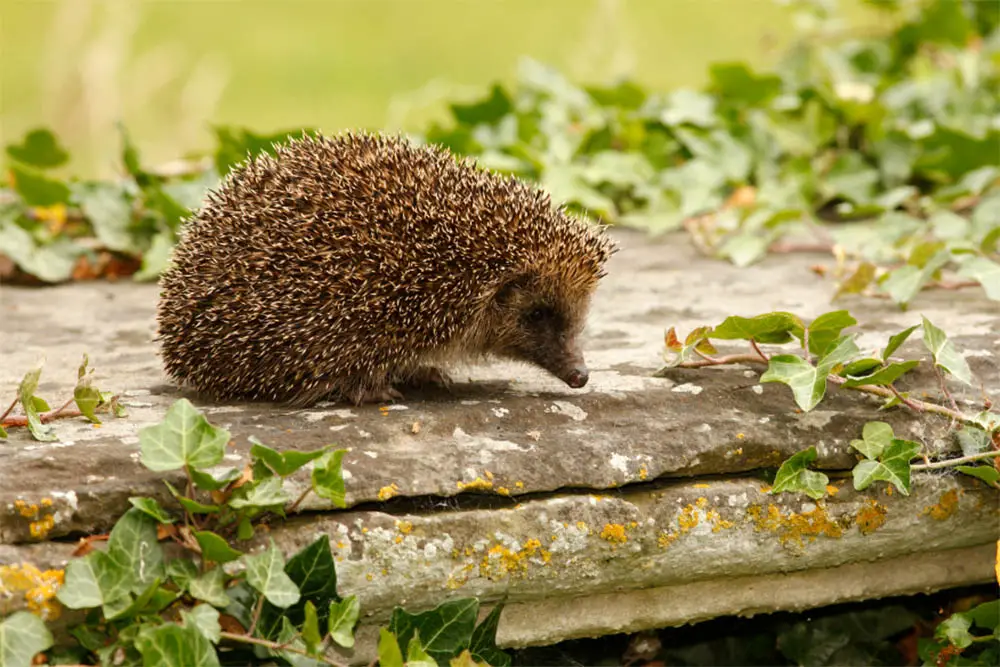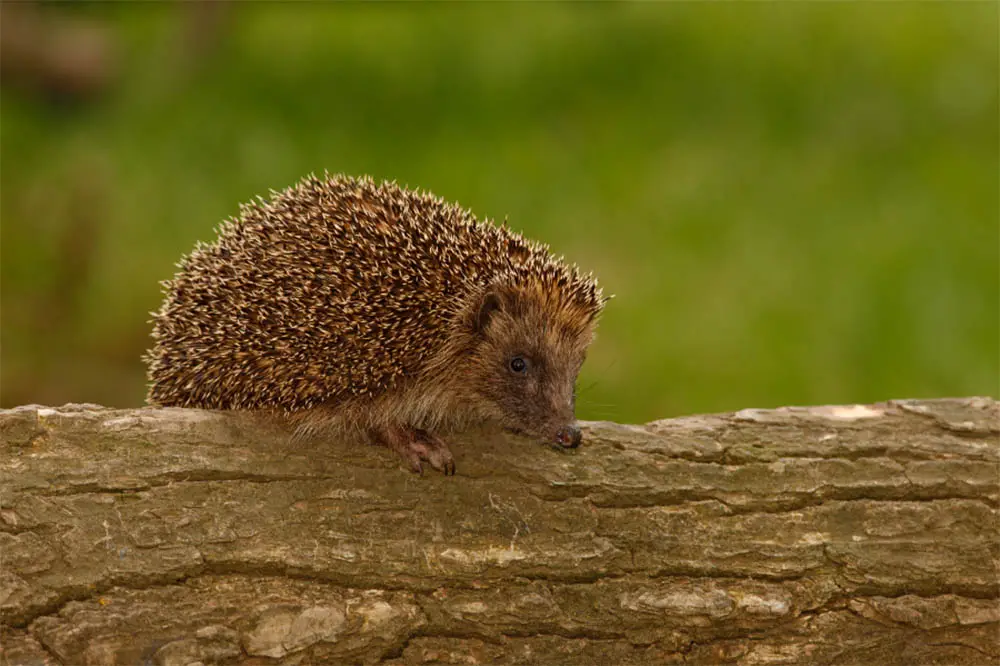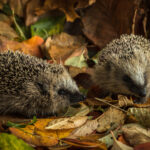European hedgehogs are a beloved member of local wildlife throughout Europe – from Britain to Italy.
With their adorable appearance contrasting with their spiky coat, European hedgehogs are certainly one of the most unique animal species on the continent.

If you’re looking to know how these creatures exist in the wild, or if you’re wanting to own one yourself, you’ve come to the right place.
We have made the ultimate guide to European hedgehogs, ranging from their history and their natural habitat to how to care for them in your own home.
What are European hedgehogs?
Often known as the common hedgehog, European hedgehogs are native to and found across Western and Central Europe. While they are most commonly associated with Britain, they are also found in Italy, Scandinavia, north-west Russia, and other parts of Europe.
When people think of hedgehogs, they are most likely to think of these fellas. Small and brown, these hedgehogs are one of the least invasive members of local wildlife.
They are nocturnal animals that are easily startled, hence why they scuttle away from humans and other wildlife. When they’re not in their nests, they like to feed on bugs and fruits.
Not only are they nocturnal, but European hedgehogs are hibernating animals. The hibernation period is usually from November to mid-March.
History of European hedgehogs
Eurinaceus europeaus (the European hedgehog) don’t exactly have a history. They are native to most of Europe, and so their history is fairly unknown.
These animals are native to rural and suburban areas across Great Britain, Scandinavia, and the majority of Western Europe and northwest Russia.

The species fizzles out towards the Czech Republic, where it lives alongside the northern white-breasted hedgehog. Both species can be often indistinguishable, but the northern white-breasted hedgehog features a white spot on its chest.
Interestingly, European hedgehogs are also found, but are not native to, New Zealand. They are known as an “invasive exotic species”.
Between the 1860s and the 1890s, colonists shipped European hedgehogs from England and Scotland over to New Zealand.
The aim was to share their local wildlife with New Zealanders to be kept as pets or for agricultural pest control. As you can imagine, not many hedgehogs survived the voyage across the seas, which took between 50-100 days.
The hedgehogs were first spread across country railway stations on the South Island, which was then later spread to the North Island in the 1890s.
By the 1920s, the number of European hedgehogs across New Zealand became excessive, and game-bird hunters began to blame them for the lack of birds they were bringing home.
This is because both game birds and hedgehogs existed on similar diets. As a result of this, hedgehogs were considered noxious animals.
The relationship between hedgehogs and New Zealanders began to fizzle out by the 1950s as the hedgehogs began to move away from the coldest and wettest parts of the South Island. However, this didn’t stop some hedgehog families from climbing the snowy mountains and glaciers – which they are still seen to do today.
When New Zealanders began to realize how beneficial hedgehogs are for pest control in gardens, they began to welcome them as they fed off slugs and snails that often destroyed their plants and grown foods.
Still, conservationists consider hedgehogs to be a nuisance as they feed off the same diet as native bush birds. Hedgehogs are omnivorous, so they also eat lizards and ground-nesting birds.
As a result of this, hedgehog-control programs still exist to this day in an attempt to retain their native wildlife. However, despite these programs, hedgehogs are still in numerous numbers and their conservation status is at “the least concern”.
European hedgehog appearance
European hedgehogs are small creatures with a distinctive spiky coat that acts as a thick layer of protection against the elements – especially when they are hibernating. There are around 6,000 of the spines that cover the body in a brown and white color. As a result of this, hedgehogs appear brownish.
In some rare cases, leucistic (blonde) hedgehogs occur due to a rare pair of recessive genes. They aren’t quite albino, but their spiny coat is blonde and their eyes are black.

When fully grown, European hedgehogs can grow up to 10” in length and usually weigh around 2.4 lbs. This length does not include the tiny tail, which grows just over an inch long. They are usually lighter in summer, as they work to fill their bodies with fat for the hibernation period over winter and early spring.
During the hibernation period or when they are sleeping in the day, hedgehogs will curl their bodies into balls. This is to protect their body from the elements or potential dangers, as their spines work as a body shield.
When distinguishing males from females, there isn’t much of a difference between the sexes. Males tend to be slightly heavier than females, and there is only a slight temperament contrast between the two. Females are said to cohabitate better than males.
Is it illegal to keep a hedgehog as a pet?
In the USA, certain states have strict laws on owning a European hedgehog as a pet. It is illegal to own a hedgehog in California, Hawaii, Georgia, New York City, Omaha (Nebraska), Pennsylvania, Arizona, and Fairfax County (Virginia).
One of the reasons why it is illegal to keep a hedgehog as a pet in these states is because hedgehogs are not native to North America.
Not only is it unethical to own a pet that is outside its natural habitat, but some hedgehog species can be carriers of foot-and-mouth disease. As this is a highly contagious disease, authorities are unlikely to allow hedgehogs to be kept as pets.
It is also illegal to own a hedgehog as a pet in Spain, Austria, and Finland.
However, other states will have different regulations on keeping a hedgehog as a pet. In most cases, a license is required to legally breed hedgehogs. A permit is required to own a hedgehog in other states like Wyoming, Maine, and New Jersey.
Due to the different laws on owning a hedgehog as a pet, it’s imperative that you check with your local authorities before buying a hedgehog from the exotic pet trade.
European hedgehogs in the wild
If you live in one of the states where owning a European hedgehog is illegal, you might still want to know about how this unique animal exists in its natural habitat. Here is the guide on how European hedgehogs live in the wild!
Habitat
As the name suggests, European hedgehogs live in hedgerows, woodland areas, and farmland. They are often found living in the bushes and shrubs around parks and fields, and even gardens.
Hedgehogs are notoriously shy and hesitant, so they much prefer to live hidden on the periphery than in the middle of a woodland area.

Other animals like badgers like to live in hedgerows and woodland areas, where hedgehogs would usually live. However, hedgehogs don’t like to coexist alongside badgers, so they aren’t often found in these areas.
European hedgehogs are most commonly found in rural areas, such as towns and villages, where the population is fewer than in the cities.
They’re not scavengers – instead, they will hunt for their food in nearby gardens and farmland at night. Still, they can also live in green areas of urban cities.
Hedgehogs prefer dry and enclosed areas, which is why they are rarely found on moors and marshland.
During the summer, they have temporary nests made of pine needles and leaves that they retreat to in the day.
Winter nests are much more hardy, as hedgehogs like to utilize logs and dense leaves and mud. They will also make these nests for breeding purposes.
Diet
European hedgehogs are omnivorous, with their main source of diet being invertebrates. This includes slugs, snails, beetles, earthworms, caterpillars, and virtually any other insect.
If they can catch a slow worm, frog, or bird egg, they will eat that too. In New Zealand, they will also eat lizards and ground-nesting birds within their reach. Hedgehogs will also often eat fruit and mushrooms.
Their diet is what makes hedgehogs ideal for pest control in the garden. They will eat slugs that would otherwise destroy plants and growing vegetables, which is more ethical than slug repellant.
However, their omnivorous diet is shared with threatened native species like game birds, which can contribute to a fewer population of such birds.
Lifespan
The average life expectancy of a European hedgehog is three years, though some are reported to live up to ten years old. This is mostly due to starvation during hibernation if the hedgehog didn’t prepare itself enough for the long dormant months.
The short lifespan can also be due to predation. While hedgehogs will curl into balls so their spiny coat can protect them, this won’t always stop hungry foxes, badgers, or hawks.
A lot of the hedgehogs found in the stomachs of these predators are usually down to roadkill or carcasses.
Speaking of roadkill, hedgehogs are mostly found on the side of the road after being hit by a moving vehicle. This is because hedgehogs are nocturnal creatures, so drivers won’t always see them scuttling across the road in the dark.
Temperament and behavior
To humans, hedgehogs are shy and hesitant creatures that try to stay away from human interaction as much as possible. If they don’t immediately roll into a protective ball, they will often freeze in their spot when a human is nearby.
To animals, hedgehogs don’t form social interactions with other creatures like badgers or foxes.
They are mostly solitary animals that only interact with other hedgehogs during the breeding and hibernating seasons. With other hedgehogs, they don’t get aggressive – they just tend to avoid one another.
Hedgehogs aren’t noisy animals, but they will make grunts and snorts as they rummage for food. As babies, hedgehogs will squeak. They will become noisier when they are captured, resulting in hoarse squeaks and audible discomfort.
One of the strangest things all hedgehogs do is called “self-anointing”.
Self-anointing is where the hedgehog produces a large amount of foamy saliva, which it then licks over its spines. The reason for this is unknown, but it could be an act of self-cleaning or marking its scent to make other hedgehogs aware of its location.
Breeding
The breeding season occurs after the hibernation period. Most hedgehog pregnancies occur in May and June, but some are said to occur even in September.
The gestation period for hedgehogs is 31-35 days long. Litters can be anywhere between two and ten hedgehogs, with most litters averaging about four to six babies.
They are born blind with a light layer of spines, which then begins to develop into a second layer of spines after 36 hours.
Young hedgehogs feed off their mother’s milk until they are around five weeks old, when they begin to eat an adult diet. Female hedgehogs have two sets of five nipples to allow her to feed a litter of ten hedgehogs.
However, she only has enough milk to feed up to five hedgehogs throughout this period, so not all baby hedgehogs survive this time if they come from a large litter.
Like their parents, baby hedgehogs can roll into a ball by the time they are 11 or 12 days old.
Health risks
Hedgehogs in the wild are most commonly known for their fleas. While some assume hedgehogs are the reason why dogs get fleas, hedgehog fleas are host-specific.
Fleas aren’t dangerous to hedgehogs as they can groom their own spines. Ticks and mites, however, can pose a real risk to hedgehogs if they aren’t removed quickly.
As hedgehogs are omnivorous and will eat anything, they are prone to obesity, metabolic bone disease, and infection from other animals. This is usually down to an unbalanced diet that lacks calcium and phosphorus.
Foot-and-mouth disease and rabies are rare in hedgehogs, but cases have still been found. They don’t tend to carry serious diseases, but scientific research is still lacking in proving this to be true.
European hedgehogs are also carriers of salmonella, which is only an issue if you are holding a hedgehog or keeping one as a pet.
European hedgehog care guide
If you have a permit to own a European hedgehog, you must commit to taking care of your pet properly. These are wild animals, after all, so their natural habitat must be replicated in their new home.
This care guide will explain everything you need to know about owning a hedgehog as a pet, in comparison to how it would normally be in the wild.
Before anything – make sure you are aware of your state’s regulations on owning a hedgehog! Escaped hedgehogs can damage and destroy an ecosystem as they are not native to America, so make sure to do your research.
Is it easy to care for a hedgehog?
Truth is, hedgehogs aren’t easy to care for. They have specific needs that must be met for their health and wellbeing. If you aren’t ready to be a committed owner, then having a hedgehog as a pet isn’t right for you.
After all, these are wild creatures. Unless you are taking care of a hedgehog for research, conservation, or rehabilitation purposes, you shouldn’t keep one as a pet.
Here is how to care for a European hedgehog!
Habitat
Your European hedgehog should live inside your house rather than outside. While you can let them outside for a run around occasionally, this can only be done when the temperatures aren’t too cold.
When they feel the cold, their bodies will assume the hibernating season has begun, which can disrupt their natural cycle.
Make sure to keep their home away from air conditioners, windows, refrigerators, and anything cold.
The temperature should be between 75-80 °F, and the cage should have access to both light and dark to allow the hedgehog to fit in with its natural nocturnal cycle.
When keeping a hedgehog at home, make them a crate or cage that has a hide inside. In the wild, hedgehogs like to make their nests from leaves, logs, and twigs.
Wherever you keep your hedgehog, make sure to make a hide for them. This can be in the form of a wooden box, tunnel, or half log that the hedgehog can feel safe underneath.
The bottom of the cage must replicate the natural flooring of woodland areas. Wood shavings and recycled paper can be harsh on their little feet, so stick to bedding or substrate.
Hedgehogs can be trained to use a litter box from a young age. Use a little litter box in the corner of the cage for this purpose, filled with litter pellets made from recycled paper. Cat litter or clay is too harsh for their bodies.
It’s a good idea to make your hedgehog a playpen so it can run around different areas of your house or yard in a controlled environment.
Diet
The diet should be the same for hedgehogs as it would be in the wild.
This means feeding them insects such as meal worms, beetles, slugs, snails, and anything else you can find. Fruits and mushrooms should also be incorporated to balance their diet.
As for water, attach a water bottle to the side of the cage as you would with a guinea pig. You can also use a water bowl if your hedgehog doesn’t like the stoppered water bottle.
Lifespan
As hedgehogs aren’t exposed to vehicles or predators, they are expected to live longer in captivity than in the wild.
However, this is only the case if they are cared for properly. Any disruption to their hibernation or nocturnal behavior can limit their lifespan. Still, pet hedgehogs can live up to ten years old with proper care.
Temperament and behavior
European hedgehogs don’t exhibit many unique behaviors in the wild, so they aren’t likely to be the most interesting pets, either.
If you raise them from a young age, there is always a possibility of your hedgehog becoming more sociable with humans (or at least tolerant). Still, these are wild animals that cannot be changed into cuddly ones.
Breeding
The breeding and mating season for hedgehogs in captivity is the same as the cycle in the wild. However, if you are intending to breed hedgehogs, you must see if your state allows it.
Most states will require a breeding permit. Also, you need to be prepared for potential cannibalism from the mother. Hedgehogs aren’t the most maternal creatures, so there is always the chance of the mother eating her young.
Hedgehogs shouldn’t begin to mate until they have reached maturity between 6 months to a year old. If they fall pregnant early, this can be detrimental to the hedgehog’s health.
Can the spikes hurt you?
As you can imagine, holding a hedgehog who has a coat of 5,000-6,000 spikes isn’t going to be a fluffy, cuddly experience. The spikes will be uncomfortable to hold, but this doesn’t necessarily mean they will hurt you.
Still, it’s not usually recommended for kids to hold hedgehogs. These creatures aren’t used to human contact by nature, even if they have been bred in captivity, so there’s always the chance of them turning around and a spine going into your kid’s hand. If the child drops the hedgehog, this can damage the animal.
Health risks
Another reason why you shouldn’t hold a hedgehog due to the risk of being stabbed by a spine is that hedgehogs carry salmonella. Like tortoises, hedgehogs carry the salmonella bacterium that causes vomiting, diarrhea, and fever.
It is essential that if you are holding a hedgehog, you should thoroughly clean your hands afterward.
Salmonella can also be carried through their droppings, so make sure to wash your hands after touching anything to do with a hedgehog – even when changing its bedding.
However, as pet hedgehogs aren’t exposed to ticks, fleas, or diseases as they would be in the wild, such health risks aren’t an issue for pet hedgehogs.









